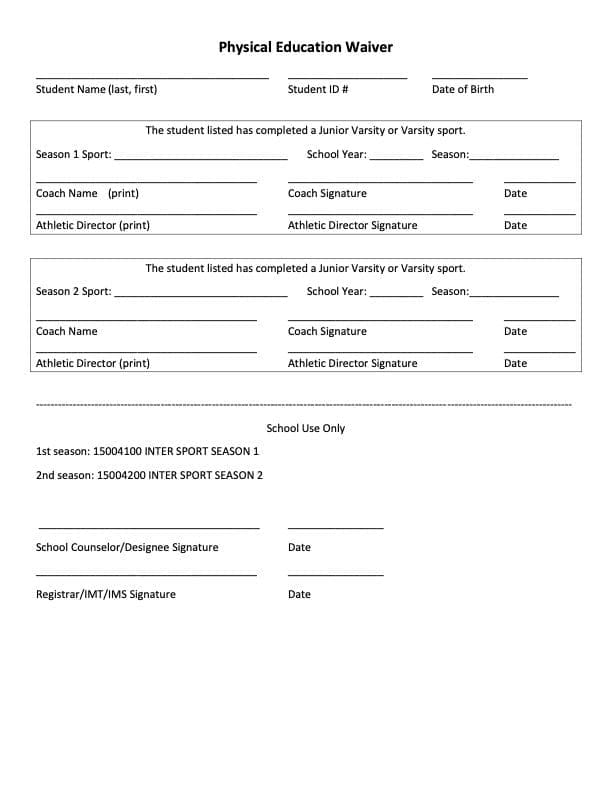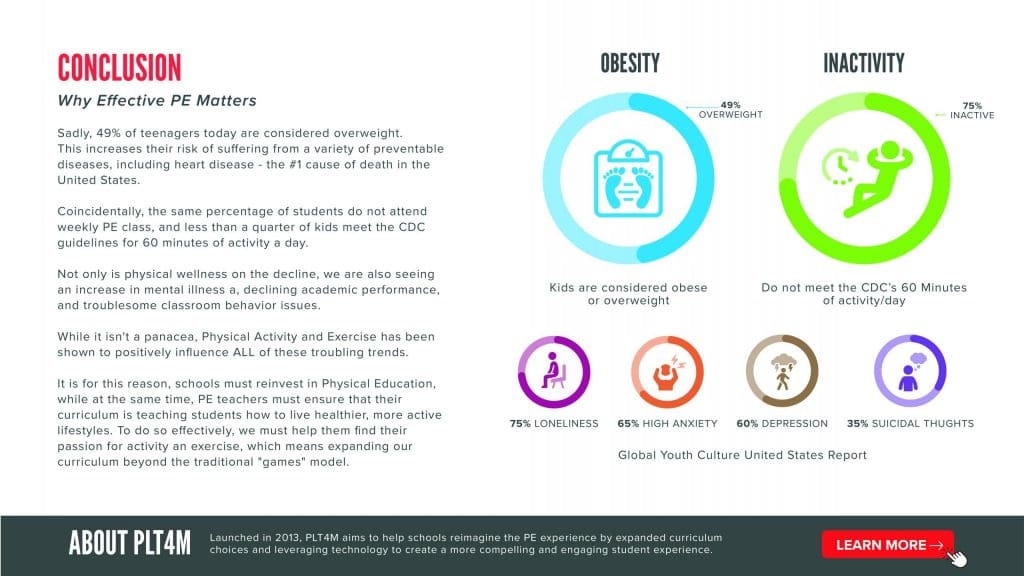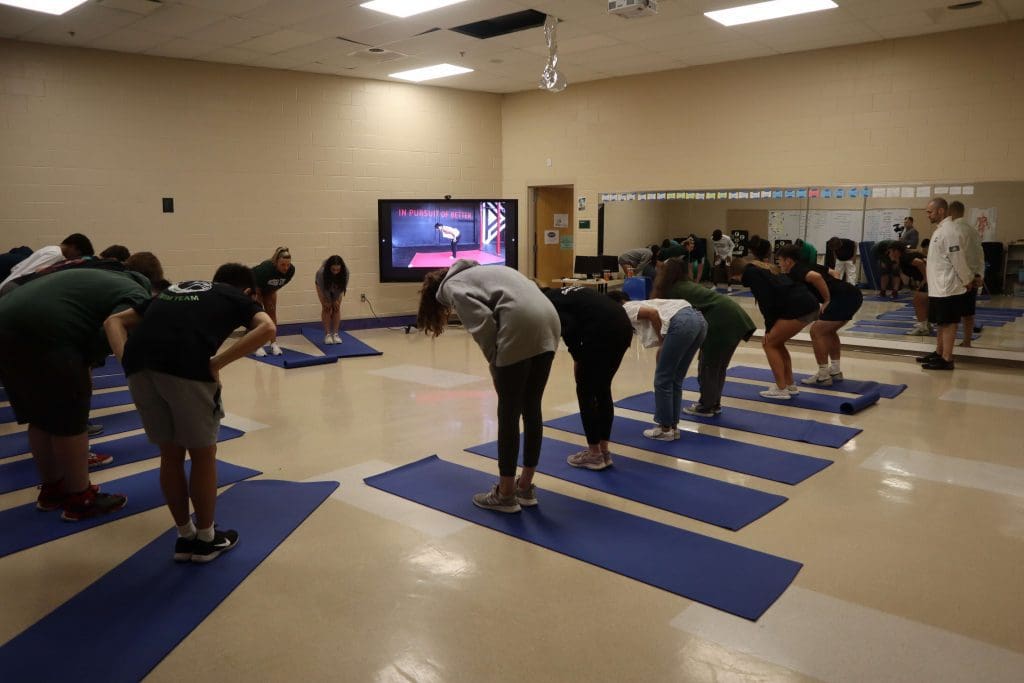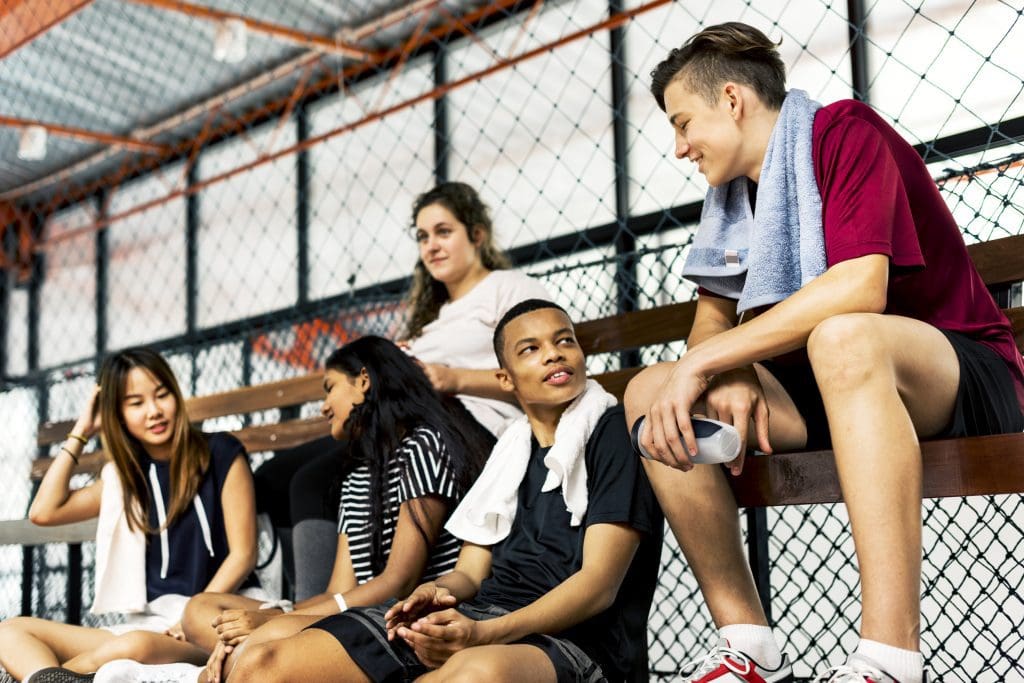A growing number of school districts and states allow exemptions from physical education. First, we break down the physical education waiver form and how schools and states use it. Next, we explore the rise in popularity, concerns around student opt-outs, and what it all means to the subject of physical education.
What is a Physical Education Waiver Form?
A physical education waiver form excuses students from taking physical education as a graduation requirement. In states where a physical education waiver is allowed, school districts can adopt the policy at the local level. Typically, school districts outline different reasons a student can be exempt or opt-out from physical education, including approved activity options, religious exemptions, physical disabilities, JRTOC, and vocational training.
For example, Ohio allows school districts to create an opt-out policy for various reasons. The law states,
“The board of education of each school district and the governing authority of each chartered nonpublic school may adopt a policy to excuse from the high school physical education requirement each student who, during high school, has participated in interscholastic athletics, marching band, show choir or cheerleading for at least two full seasons or an approved Junior Reserve Officer Training Corps (JROTC) program for two years.”
As a result, students do not have to fulfill the standard physical education graduation requirements and can take other classes or credits instead. In many cases, a parent/guardian and athletic director/coach have to sign off on the waiver (example below).

The Rise Of Physical Education Waiver Forms
While there are many different reasons for physical education waiver forms, the rise of opt-outs stems from the belief students can meet or exceed the physical activity recommendations in alternative ways than physical education.
The argument is that if students participate in marching band or multiple sports seasons, they consistently and actively engage in physical activity and exercise. As a result, the belief is that students do not need more physical activity via physical education classes. For example, the three-sport varsity athlete is in a sport season all year long and therefore doesn’t also need PE.
In a recent survey, the most commonly reported reasons for physical education waiver forms were participation in school sports (27.9%) and other school activities such as band, chorus, or JROTC (32.5%).
Beyond just checking the box of physical activity, proponents believe that opting out of PE will allow students more freedom and time to pursue other classes and opportunities during the school day.
Now over 30 states have some type of physical education waiver form in place. This still means that the local school district must approve and adopt this policy, but schools have a growing option to offer students waivers for PE.
Check out the full study on physical education waivers and exemptions.

Concerns Surrounding Physical Education Waiver Forms
Over the years, there has been a growing concern about physical education requirements in general. At many high schools, students have to take as little as one-half unit credit of physical education to fulfill graduation requirements. Now, with physical education waiver forms on the rise, more advocates are concerned about what this means for PE,
“These waivers can undermine the importance of physical education.” – Action For Healthy Kids.
Others, including PLT4M, have also shared opinions about the key distinction schools must make between physical activity vs physical education. Shape America states,
“Based on sequence of learning, physical education should not be compared to or confused with other physical activity experiences such as recess, intramurals, or recreational endeavors.”
Even the CDC has outlined the importance of physical education and the need for quality PE in schools. Rather than just looking at it as an opportunity for physical activity, they say,
“It is an academic subject characterized by a planned, sequential K–12 curriculum (course of study) that is based on the national standards for physical education. Physical education provides cognitive content and instruction designed to develop motor skills, knowledge, and behaviors for physical activity and physical fitness. Supporting schools to establish physical education daily can provide students with the ability and confidence to be physically active for a lifetime.”
Physical Education In The Age Of Waivers & Opt-Outs
At PLT4M, we believe that students should participate in a comprehensive and quality physical education experience. Yes, interscholastic athletics, marching band, and other activities provide physical activity time. Still, they do not address or replace the complete picture of health, fitness, and wellness that physical education does.
Physical education presents the best opportunity to instill lifelong skills and values around healthy living. And our students need this education now more than ever. With countless startling statistics around student physical, mental, and emotional well-being, we shouldn’t be looking to remove PE but rather consider ways to enhance it.
So, while we will continue to advocate for the importance of physical education, operating in the current educational environment is essential. If states and school districts continue reducing physical education requirements and creating exemption opportunities, PE must adapt.

Elective PE & The Student Choice Model
Just because a school adopts a physical education waiver form doesn’t mean that students in interscholastic athletics, marching band, and other exemption-eligible reasons can’t or shouldn’t participate in PE. While opt-out might be an option, when physical education offers students empowering and engaging opportunities, they will continue to take PE even if they could technically be exempt.
Many high schools are shifting to an elective-based physical education offering to achieve this. Here, students have different choices that will complement and supplement what they might have initially opted out of PE for. Students can explore different electives and choices that they want to pursue.
For example, a high school athlete can participate in a strength and conditioning elective. Within this elective, students can enhance their athletic performance and be introduced to key concepts around recovery, nutrition, and other elements of athletic performance.
Another example schools can offer is a personal fitness class. Here, students can explore different types of lifetime fitness activities like yoga, pilates, bootcamp, and more. Once marching band or sports aren’t a part of a young person’s life, they will have an arsenal of different fitness and wellness options to choose from as adults.

Example of Student Choice In Action
At Wyomissing High School in Pennsylvania, the school has shifted to a lifetime fitness model that offers students different choices and options. The classes transformed from general physical education courses to a wide range of elective choices that any 9th through 12th grader could choose from. Some of these electives were brand new, while others were continuations of popular courses already offered.
The electives included:
Mind and Body Connection
Strength and Conditioning
Personal Fitness
Net Games
Backyard and Rec Games
Team Games
Jodi Reardon, PE department chair, was excited to see a new range of classes and electives offered to support lifetime fitness better,
“We believed what we had created would be well received because we had asked for student input. The different electives gave every different type of student a chance to choose something that would allow them to take part in physical education and enjoy it.”
Now Wyomissing is seeing more students enjoying and participating in physical education that ever before. Check out the full success story below.
Key Takeaways On The Physical Education Waiver Form
While the intention of the physical education waiver form is to honor different ways students can be physically active, it can overlook all the other ways physical education impacts students’ health, wellness, and fitness.
Our students need to learn and develop a robust set of skills around health and wellness that they likely won’t get solely from marching band, sports, or other activities. And when those activities come to a close, and students become young adults, a quality physical education can set them on the path to lifelong success.
As key stakeholders evaluate the physical education waiver form and student exemptions, they must consider the importance of consistent and quality PE opportunities.










